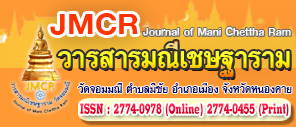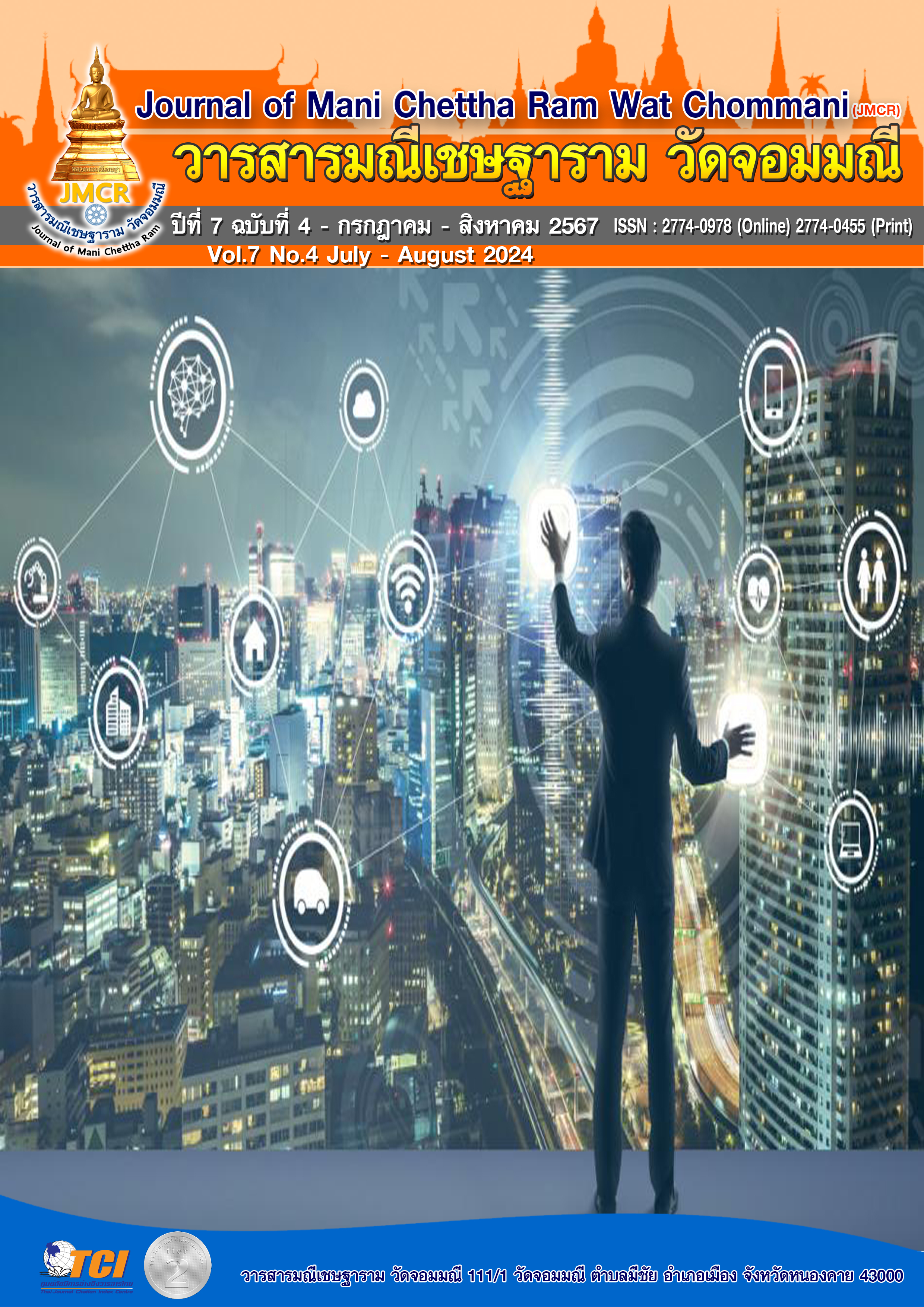การเสริมสร้างความเป็นเลิศในการสื่อสารภาษาอังกฤษ ในโรงเรียนเอกชน
คำสำคัญ:
การเสริมสร้างความเป็นเลิศ, การสื่อสารภาษาอังกฤษ, โรงเรียนเอกชนบทคัดย่อ
ในโลกที่เชื่อมโยงแบบนี้ ความสามารถในการสื่อสารภาษาอังกฤษมีความสำคัญอย่างมาก โดยเฉพาะสำหรับนักเรียนที่เรียนในโรงเรียนเอกชน บทความวิชาการนี้มุ่งเน้นการสำรวจกลยุทธ์และวิธีการต่างๆ ที่เหมาะสมสำหรับการพัฒนาความเป็นเลิศในการสื่อสารภาษาอังกฤษภายในโรงเรียนเอกชน บทความเริ่มต้นด้วยการสนทนาถึงความสำคัญของความถนัดทางภาษาอังกฤษในการส่งเสริมความสำเร็จทางการเรียน โอกาสในอาชีพ และสิ่งที่เกี่ยวข้องกับเชื้อชาติที่เป็นผู้ประกอบการของนักเรียน บทความนี้ได้ทำการวิเคราะห์ความท้าทายในปัจจุบันที่โรงเรียนเอกชนทั้งในประเทศไทยและระหว่างประเทศ ในการสอนทักษะการสื่อสารภาษาอังกฤษอย่างมีประสิทธิภาพ นอกจากนี้ยังนำเสนอการทบทวนวรรณกรรมเกี่ยวกับวิธีการสอนที่มีประสิทธิภาพ โปรแกรมพัฒนาครู และบทบาทของผู้ปกครองและชุมชนในการสนับสนุนการศึกษาภาษาอังกฤษในโรงเรียนเอกชน นอกจากนี้ยังมีการวิเคราะห์ตัวอย่างสถานการณ์จากโรงเรียนเอกชนทั้งในประเทศไทยและระหว่างประเทศเพื่อเน้นแนวทางการปฏิบัติที่ประสบความสำเร็จและผลกระทบต่อทักษะการสื่อสารภาษาอังกฤษของนักเรียน บทความสรุปด้วยข้อเสนอแนะสำหรับการพัฒนาความเป็นเลิศในการสื่อสารภาษาอังกฤษในโรงเรียนเอกชน โดยเน้นการพัฒนาอาจารย์อย่างต่อเนื่อง การมีส่วนร่วมของชุมชนและการใช้เทคโนโลยีการสอนอย่างสร้างสรรค์
เอกสารอ้างอิง
Airasian, P. W. (1994). Classroom assessment (2nd ed.) McGraw-Hill.
Baker, C. (2011). Foundations of Bilingual Education and Bilingualism (5th ed.) Multilingual Matters.
Baker, W. (2008). English as a lingua franca in Thailand: Characterizations and implications. Englishes in Practice, 1(1), 18-27.
Barton, D., & Hamilton, M. (2000). Literacy practices. In D. Barton, M. Hamilton, & R. Ivanic (Eds.), Situated literacies: Reading and writing in context (pp. 7-15) Routledge.
Black, P., & Wiliam, D. (1998). Assessment and classroom learning. Assessment in Education: Principles, Policy & Practice, 5(1), 7-74.
Bonwell, C. C., & Eison, J. A. (1991). Active learning: Creating excitement in the classroom. ASHE-ERIC Higher Education Reports.
Brewster, C., & Railsback, J. (2001). Becoming a professional: An interdisciplinary analysis of professional learning. Teachers College Press.
Crystal, D. (2003). English as a Global Language (2nd ed.) Cambridge University Press.
Cummins, J. (2008). BICS and CALP: Empirical and theoretical status of the distinction. In B. Street & N. H. Hornberger (Eds.), Encyclopedia of language and education (2nd ed., Vol. 2, pp. 71-83) Springer.
Darling-Hammond, L. (2006). Constructing 21st-century teacher education. Journal of Teacher Education, 57(3), 300-314.
Davies, A. (2011). School inspection and self-evaluation: Working with the new relationship. Routledge.
Ellis, R. (2003). Task-based language learning and teaching. Oxford University Press.
Epstein, J. L. (2001). School, family, and community partnerships: Preparing educators and improving schools. Westview Press.
Foley, J. A. (2005). English in Thailand. RELC Journal, 36(2), 223-234.
Fullan, M. (2001). The new meaning of educational change (3rd ed.) Teachers College Press.
Gronlund, N. E. (2006). Assessment of student achievement (8th ed.) Pearson.
Hargreaves, A. (1998). The emotional practice of teaching. Teaching and Teacher Education, 14(8), 835-854.
Hattie, J. (2009). Visible learning: A synthesis of over 800 meta-analyses relating to achievement. Routledge.
Hill, N. E., & Taylor, L. C. (2004). Parental school involvement and children’s academic achievement: Pragmatics and issues. Current Directions in Psychological Science, 13(4), 161-164.
International Schools Review. (2022). International School Bangkok.
Johnson, R. B., & Christensen, L. (2019). Educational Research: Quantitative, Qualitative, and Mixed Approaches (7th ed.) SAGE Publications.
Juthamas, S. (2021). Enhancing English Communication Excellence: Case Study of Chulalongkorn University Demonstration School. Journal of Educational Research, 10(2), 123-135.
Kessler, G. (2018). Technology and the future of language teaching. Foreign Language Annals, 51(1), 205-218.
Kirkpatrick, A. (2012). English as an international language in Asia: Implications for language education. Springer.
Nunan, D. (1999). Second language teaching & learning. Heinle & Heinle.
Popham, W. J. (2009). Assessment for educational leaders. Pearson.
Prarngamvitaya School. (2020). Developing English Communication Excellence: Case Study of Prarngamvitaya School. Bangkok, Thailand.
Richards, J. C. (2006). Communicative language teaching today. Cambridge University Press.
Stiggins, R. J. (2002). Assessment crisis: The absence of assessment for learning. Phi Delta Kappan, 83(10), 758-765.
US Department of Education. (2015). Teacher development programs in the United States.
Warschauer, M., & Grimes, D. (2007). Audience, authorship, and artifact: The emergent semiotics of Web 2.0. Annual Review of Applied Linguistics, 27, 1-23.
Wiliam, D. (2011). Embedded formative assessment. Solution Tree Press.
Willis, D., & Willis, J. (2007). Doing task-based teaching. Oxford University Press.




